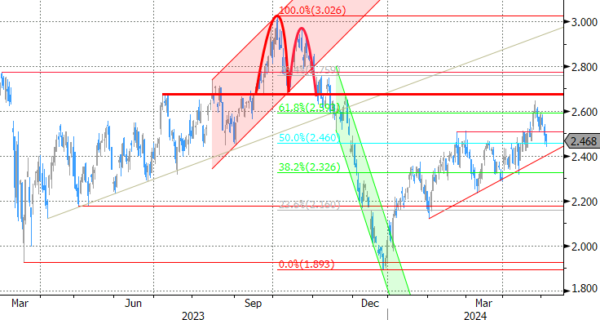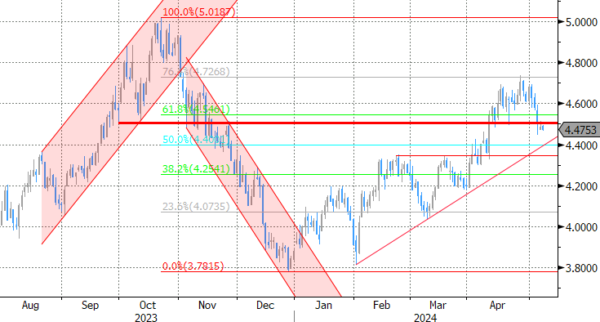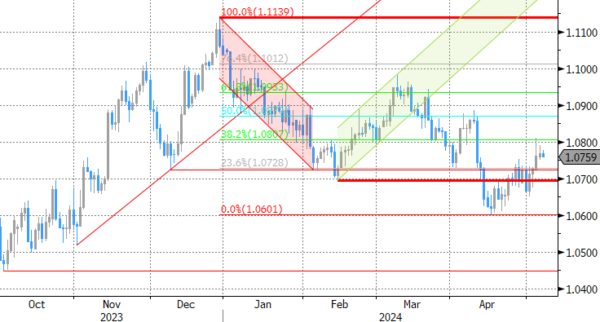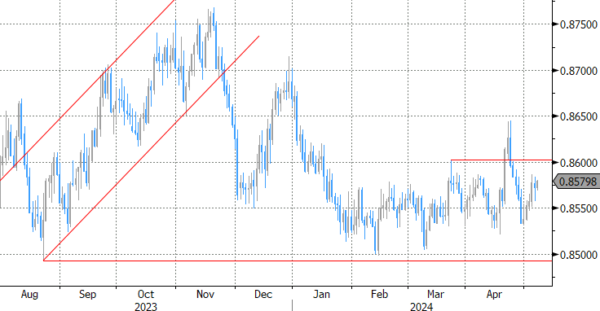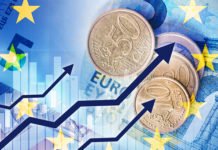Markets
Markets yesterday staged some follow-through price action on Friday’s post-payrolls/ISM easing, but the move gradually slowed in US dealings. Fed governors Williams and Barkin confirmed last week’s view of Chair Powell that the next Fed move will likely be a rate cut. A restrictive policy is bringing the economy in a better balance and at some point should return inflation back to 2%. Data will decide on the timing. The Fed’s quarterly Senior Loan Officer Opinion Survey on bank lending also indicated that tighter financial conditions are working through toward lending (cf infra). This should gradually slow demand and inflation. At the end of the day, the US 2-y yield rose 1.5 bps. Yields at the long end of the curve still declined up to 3.0 bps (30-y). German yields eased between 1.2 bps (2-y) and 2.7 bps (10-y). Fed guidance that, despite sticky inflation, its next step will likely be a rate cut continues to give comfort to equity investors. US indices added up to 1.19% (Nasdaq). The dollar basically didn’t go anywhere. The DXY index closed unchanged (105.05). EUR/USD gained marginally (close 1.0769). USD/JPY was the exception to the rule, rebounding to 153.9. The US-Japan interest rate differential clearly remains too big to prevent yen selling.
Asian markets mostly join the risk-on sentiment from WS yesterday. Yields decline marginally. The dollar gains a few ticks. The yen remains in the defensive. Headlines of Japan’s currency official Masato Kanda that no interventions are needed when markets move orderly, suggest that any interventions might remain rather selective. The yen weakens further this morning (USD/JPY 154.5). Later today, the eco calendar only contains second tier data. German factory orders and EMU retail sales might bring some additional insight on the EMU recovery. ECB governors De Cos and Nagel are scheduled to speak. The US Treasury will kickoff this week’s refinancing operation with the sale of $58 bln of 3-year notes. It will be interesting to see demand in the wake of last week’s decline in yields. We expect some more technical trading ahead of the April US inflation data to be published next week. We see 4.70% and 4.37% as tough support for the US 2 and 10-y yield respectively. The yield correction slowing also might help to put a floor for the dollar. EUR/USD 1.0807/11 (38% retracement Dec-April decline/ correction top) remains first reference on the EUR/USD chart.
News & Views
The Fed’s latest Senior Loan Officer Opinion Survey (SLOOS) showed that banks grew more cautious about lending while higher interest rates continued to weigh on loan demand. Standards were raised for all loan categories except some residential real estate products. Higher standards were applied to commercial real estate loans in particular. That said, the net share of banks tightening conditions fell for most loan products in what is potentially a sign of loan growth moving beyond the trough. More banks reported tighter conditions for commercial and industrial loans but the net share remains well below last July’s peak. The share of banks tightening standards for auto loans ticked up but a smaller proportion reported higher standards for credit card and other consumer loans. Demand for all types of consumer loans remains in retreat.
The Reserve Bank of Australia (RBA) kept the policy rate stable at 4.35% this morning. The status quo followed the observation that inflation was declining more slowly than expected (3.6% q/q in Q1 this year from 4.1%). Underlying inflation was higher and declined by less, in large part due to services inflation. The RBA said there’s still excess demand while labour market conditions are tighter than is consistent with inflation at target. New forecasts are based on a market-implied policy rate path which assumes a steady rate through mid-2025. This compares to the February projections assuming rate cuts from 2024H2 on. Yet, inflation was revised higher across the horizon with an EoY target of 3.8% (vs 3.2%) only to enter the RBA’s 1-3% band in December 2025 (2.8%). The RBA singled out the persistence of services inflation as a key uncertainty to this trajectory. GDP growth was marginally cut to 1.6% this year amid particularly weak household consumption. The central bank repeated that it does not rule anything in or out in terms of rates and sticks to a data-dependent approach. Markets were clearly hoping for something a little more aggressive after the recent string of strong labour and inflation data. The Aussie dollar loses some ground to AUD/USD 0.661 and swap yields ease up to 9 bps at the front end of the curve.
Graphs
GE 10y yield
ECB President Lagarde clearly hinted at a summer (June) rate cut which has broad backing. EMU disinflation continued in April and brought headline CPI closer to the 2% target. Together with weak growth momentum, this gives backing to deliver a first 25 bps rate cut. A more bumpy inflation path in H2 2024 and the Fed’s higher for longer strategy make follow-up moves difficult. Markets have come to terms with that.
US 10y yield
The Fed in May acknowledged the lack of progress towards the 2% inflation objective, but Fed’s Powell left the door open for rate cuts later this year. Soft US ISM’s and weaker than expected payrolls supported markets’ hope on a first cut post summer, triggering a correction off YTD peak levels. Sticky inflation suggests any rate cut will be a tough balancing act. 4.37% (38% retracement Dec/April) already might prove strong support for the US 10-y yield.
EUR/USD
Economic divergence, a likely desynchronized rate cut cycle with the ECB exceptionally taking the lead and higher than expected US CPI data pushed EUR/USD to the 1.06 area. From there, better EMU data gave the euro some breathing space. The dollar lost further momentum on softer than expected early May US data. Some further consolidation in the 1.07/1.09 are might be on the cards short-term.
EUR/GBP
Debate at the Bank of England is focused at the timing of rate cuts. Most BoE members align with the ECB rather than with Fed view, suggesting that the disinflation process provides a window of opportunity to make policy less restrictive (in the near term). Sterling’s downside turned more vulnerable with the topside of the sideways EUR/GBP 0.8493 – 0.8768 trading range serving as the first real technical reference.




